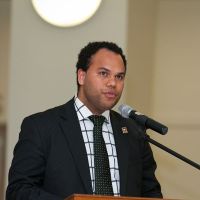Air Niugini’s Ambiguous Ticket Prices & Taxes

Air Niugini is a company which has had its fair share of highs and lows. In 2002, Air Niugini was on the brink of insolvency and a Government guarantee was required to support the company’s borrowing from the Bank of South Pacific. The government also restructured the Air Niugini Board and senior management in an attempt to improve the airline’s core business – a strategy which worked and resulted in PNG’s national airline returning a profit of US$15.8 million in 2003.
Since the implementation of the reforms, Air Niugini has done well. The airline recorded a profit of US$12.2 million in 2004; and more recently posted a $US24 million profit for 2009. In amongst this solid organic growth, the company has reduced its debt burden, undergone internal restructuring, recognized pay-equity issues, procured new aircraft and developed new routes and code-sharing agreements.
However, despite all of this, the airline still receives severe criticism from the public regarding the continuous increase in its airfares, particularly surrounding its domestic routes. There are two contributing factors to this annual public outcry: 1) a lack of understanding by consumers regarding the macroeconomic drivers of airline costs, more specifically – the only cost consumers really care about, i.e. ticket prices; and 2) an ambiguous pricing strategy which is neither transparent or communicated well enough to allow consumers to understand Air Niugini’s decisions in the first instance.
For example, if you were to book a one-way flight from Port Moresby to Rabaul today, it would cost you a total amount of K507.30 (made up of a base fare worth K303.00, plus K204.30 worth of taxes). The following tax breakdown is provided by Air Niugini:
The obvious question here is what exactly are the two surcharges (circled) listed in the tax breakdown for? Air Niugini attempts to explain what taxes, levies or surcharges are applicable to fares by offering this explanation under its FAQ section:
“Fuel and insurance surcharges, airport and government costs are included in the advertised base fare price. Applicable costs payable to third parties, such as airports and governments are still shown separately during the online booking process when you choose your flights.”
Satisfied? Not exactly. If you really want to know what the two listed surcharges are for, a bit of research will yield some results. Earlier this year, Air Niugini CEO Wasantha Kumarasiri fronted up to media after international fuel prices increased by 13.6% in eight months. As a result of the increases in fuel costs, Mr. Kumarasiri said the new fuel surcharge for all domestic routes will be K125.00 per person per flight, which represented an increase of K10.00 for each domestic route, except for Rabaul and Lihir which already existed at that level. Presumably, the K15.00 surcharge is an insurance cost built into the fare.
Taking all this into account, some questions still exist. If the Air Niugini tax breakdown (K204.30) illustrated above is composed of applicable costs payable to third parties (e.g. airports and governments), what exactly is the makeup of the base fare (K303.00)? It certainly should not include the fuel and insurance surcharges as these are included in the tax component of Air Niugini fares – although Air Niugini’s FAQ explanation states that base fares are inclusive of “fuel and insurance surcharges, airport and government costs”.
Air Niugini’s explanation seems to state that consumers are paying two lots of fuel and insurance surcharges, and a number of unidentified airport and government costs! What is going on? Surely it isn’t that challenging to describe what costs contribute to a ticket fare in PNG.
From a business perspective it makes sense to mitigate risks to your organization. Air Niugini is a state-owned enterprise, and one of its biggest challenges in PNG’s aviation sector is the accountability-factor which accompanies its ownership structure. The perception that Air Niugini can not justify its increasing airfares, whether right or wrong, is damaging the reputation of the airline. The least the company can do is to educate consumers as to what exactly constitutes a ticket fare in PNG – and the first step management should consider is a clear and precise pricing strategy which is communicated well to the consumers and owners of Air Niugini, the people of Papua New Guinea.
[UPDATE: Five days after T&D wrote this post, Air Niugini’s CEO Wasantha Kumarasiri announced another increase in Air Niugini fees. Air Niugini’s tax breakdown remains the same.]















[…] April 11, 2011 by bikeal Leave a Comment Air Niugini is a company which has had its fair share of highs and lows. In 2002, Air Niugini was on the brink of insolvency and a Government guarantee was required to support the company's borrowing from the Bank of South Pacific. The government also restructured the Air Niugini Board and senior management in an attempt to improve the airline's core business – a strategy which worked and resulted in PNG's national airline returning a profit of U … Read More […]